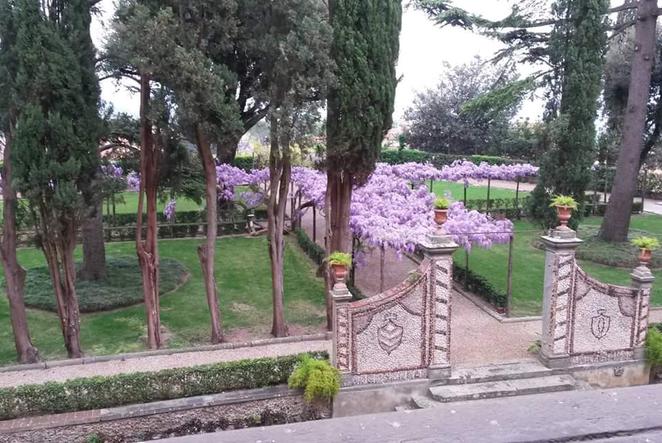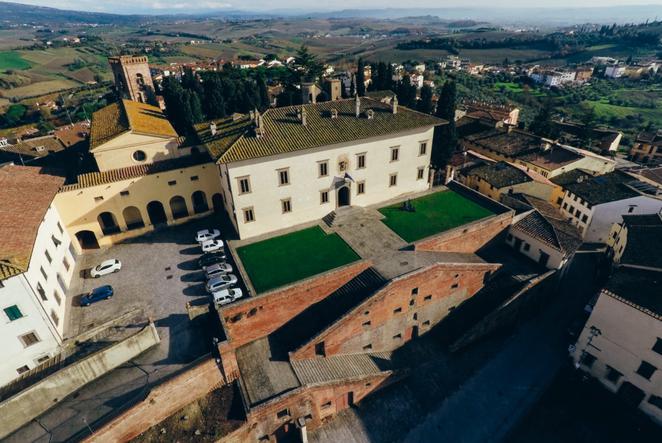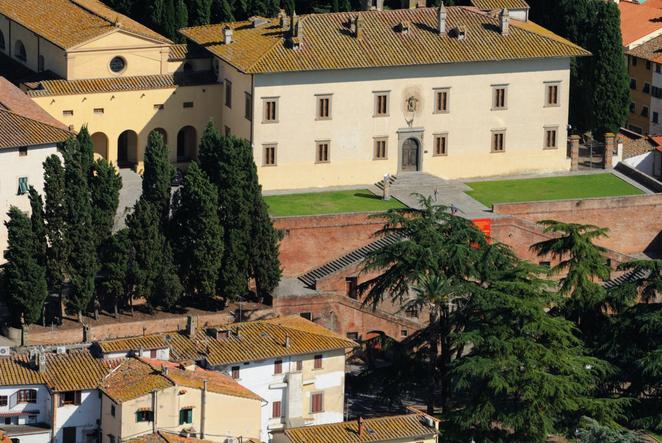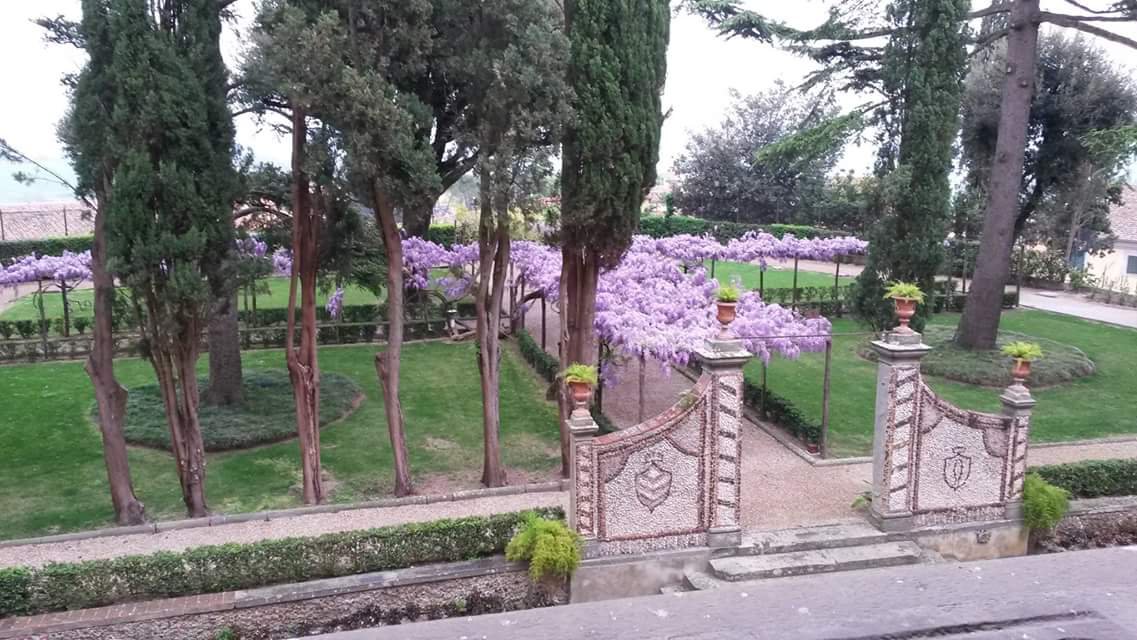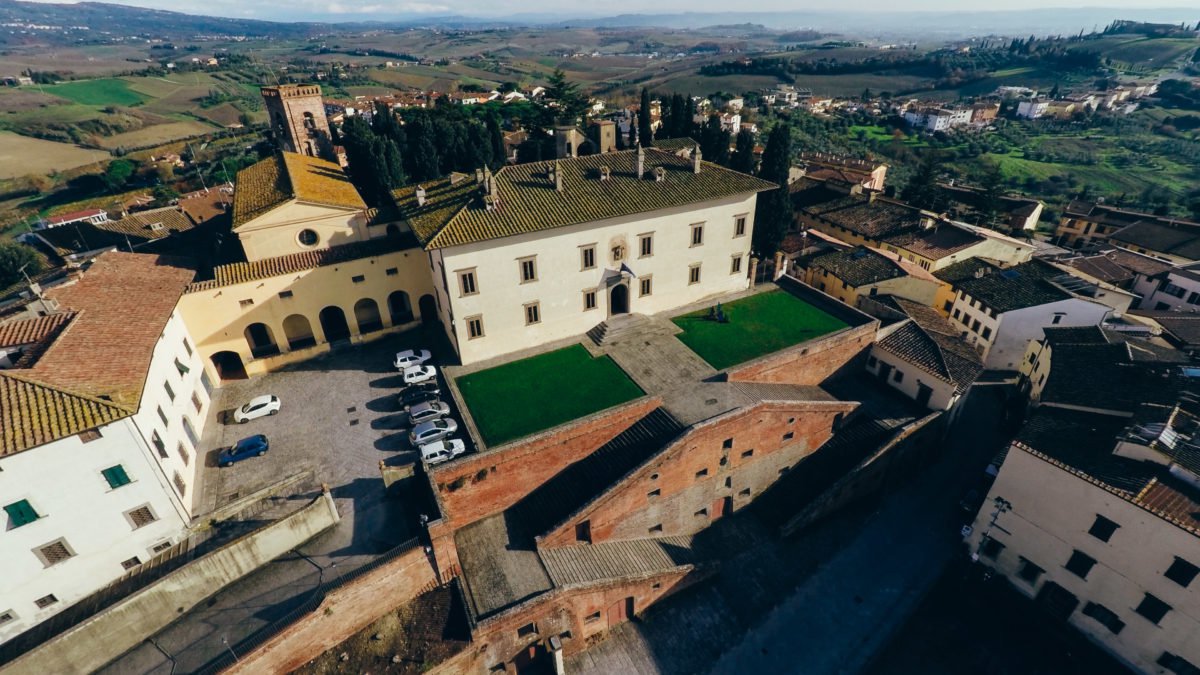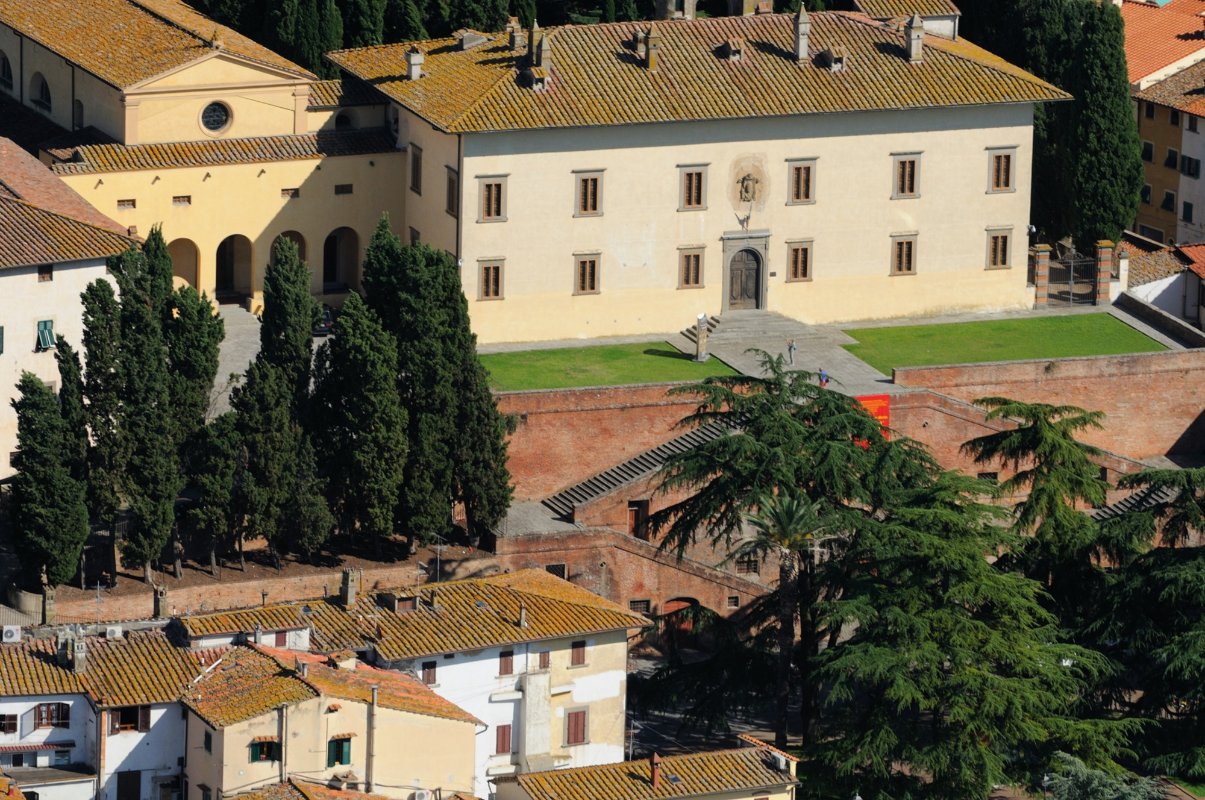Medici Villa of Cerreto Guidi
Cerreto Guidi was chosen, during the 16th century, by Cosimo I de' Medici for the construction of his suberb Villa destined to be the hunting house of the Medici court inside the "Barco Reale" extended on the hills of Montalbano and, at the same time, place for the control of the territory, in particular of the Padule di Fucecchio, which at that time was very fishy.
Built between 1564 and 1567 starting from a project attributed to Bernardo Buontalenti and implemented by Alfonso Parigi il Vecchio, it seems that even on a design level, the multifaceted Davide Fortini was also involved, the villa was built using a large part of the materials obtained by demolishing the walls of the ancient fortified village and creating the four peculiar and imposing ramps "scalera", in facing brick and Gonfolina stone, called "bridges" or, more frequently " Medici bridges ".
The villa was built, as was done at that time, with the decisive contribution of the locals, who were required to carry out the so-called "commanded", that is, the consistent and lasting series of mandatory works which, after the fortification and construction works, they were turned to the seasonal activities of the ducal crops.
The building, imposing and sober at the same time, is located in the town centre, right in its highest part, and is the fulcrum of the historic centre of Cerreto Guidi, from which the road lines that stretched towards the countryside branched off and which, over time, would have been dotted with a large nomber of oratories, some still existing today.
Inside, in addition to numerous wall decorations of late neoclassical taste, you can appreciate important portraits of the Medici family, among which the full-length portrait of Cosimo I with the dress used for the coronation to Grand Duke and the portrait of Isabella de'Medici, work of a Florentine painter inspired by Alessandro Allori.
Of great importance are the tapestries of the Medici manufactury depicting the Four Seasons: although not originally present in the villa of Cerreto Guidi, they can certainly suggest the type, value and preciousness of the tapestries that once decorated the villa. Noteworthy are the works selected largely from those of the bequest of the antiquarian Stefano Bardini: paintings on wood and canvas, inlaid and painted chests, sculptures, majolica and hard stone artefacts.
The relationships of the villa with the Padule habitat are illustrated, inside the building, by maps and models.
Since September 2002 the Historical Museum of Hunting and Territory has been set up on the first floor of the Villa. It houses a collection of weapons, mainly for hunting and shooting, from the 17th-19th centuries, coming from depots, donations and temporary loans.
The Villa, which is part of the UNESCO Site "Medici Villas and Gardens in Tuscany", owes part of its fame to the figure - already mentioned - of Isabella de' Medici, favorite daughter of Cosimo I, who used to spend here periods of rest and leisure.
Information
Address: Via dei Ponti Medicei, 7, Cerreto Guidi
Web site: https://villegiardinimedicei.it/villa-di-cerreto-guidi/
Phone: 0571 55707
GPX coordinates: 43.758992,10.878987
